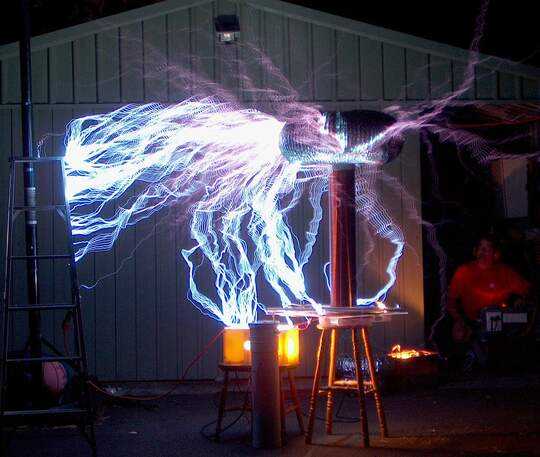Radio Technician here. Obviously late, but hope I can help clear up any confusion
Almost any kind of Wi-Fi antenna will be a dipole. Dipole antennas theoretically radiate in a 360 degree disc around the antenna, in other words, a plane perpendicular to the antenna. To help visualize it, think of your antenna like a lighthouse, but shining in all 360 degrees at once.
In the real world, it won't be a flat plane, but instead more of a doughnut shape. The signal will be weaker above and below the plane, especially close to the antenna, but there won't likely be a complete dead zone. With all that said, if you only had one antenna, it would be good to place it perpendicular to your target. If your access point is below you, that would mean placing the antenna parallel the ground.
Enter the second (or more) antennas if you have them. Should that be oriented in the same way to further boost the signal strength? Probably not. Dipoles aren't just directional, they are also polarized. That means, signals will lose power when the transmitting and receiving antennas aren't oriented the same way.
Consider your cell phone's antenna... It is constantly changing orientation. If your transmitting antennas are both oriented the same, the receiving antenna will often be at a bad angle, leading to a lossy connection. If you have your second antenna 90 degrees off of your first antenna, you will greatly improve signal, just based on having appropriate polarization for more incoming signals, including all the reflected and refracted signals. \ / Bunny ears didn't happen by accident .
So in summary, point your first antenna perpendicular to your intended target, or straight up if you just want to cover a flat area like a single floor home. Point your second antenna 90 degrees off that. You can try to be strategic about which of the 360 possible degrees you use for that second antenna, but most of the time it won't matter much, since the bulk of its job is catching mis-polarized signals.
A lot a good info about antenna characteristics can be found here: https://www.cisco.com/c/en/us/support/docs/wireless-mobility/wireless-lan-wlan/82068-omni-vs-direct.html

1
It is data dependent
– RedGrittyBrick – 2011-10-03T11:03:21.517